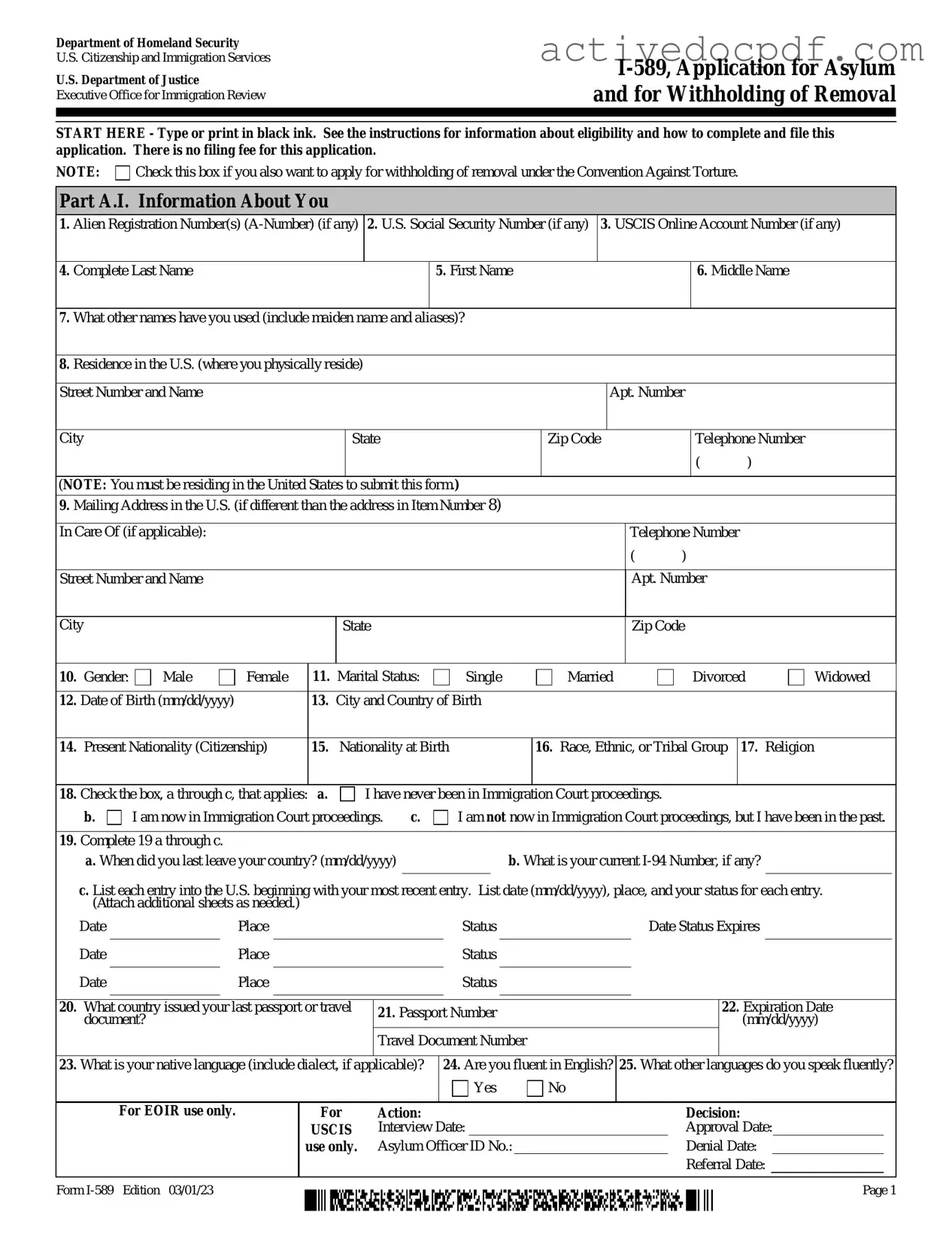The USCIS I-589 form, also known as the Application for Asylum and for Withholding of Removal, is a crucial document for individuals seeking asylum in the United States. This form allows applicants to request protection from persecution or fear of persecution in their home country based on specific factors such as race, religion, nationality, political opinion, or membership in a particular social group.
Individuals who are physically present in the United States and fear persecution in their home country may be eligible to file the I-589 form. Eligibility includes:
-
Those who have experienced persecution or have a well-founded fear of future persecution.
-
Individuals unable to return to their home country due to fear of harm.
-
Persons who meet the definition of a refugee.
Generally, applicants must file the I-589 form within one year of arriving in the United States. However, there are exceptions to this rule. Some individuals may qualify for an extension if they can demonstrate changed circumstances that affect their eligibility for asylum.
The I-589 form requires detailed personal information, including:
-
Your name, address, and contact information.
-
Details about your family members.
-
A thorough account of the persecution you faced or fear.
-
Any relevant supporting documents, such as personal statements or evidence of your claims.
Can I include family members in my I-589 application?
Yes, you can include certain family members in your I-589 application. This typically includes your spouse and children under the age of 21. It is essential to provide their information on the form and explain your relationship to them.
After submitting the I-589 form, you will receive a receipt notice from USCIS. This notice will confirm that your application is being processed. You may then be scheduled for an interview where you will present your case. It is crucial to prepare thoroughly for this interview, as it plays a significant role in the outcome of your application.
Can I work while my I-589 application is pending?
Yes, you may apply for work authorization while your I-589 application is pending. You can submit Form I-765, Application for Employment Authorization, after your I-589 has been pending for 150 days. However, you cannot begin working until you receive your employment authorization document (EAD).
